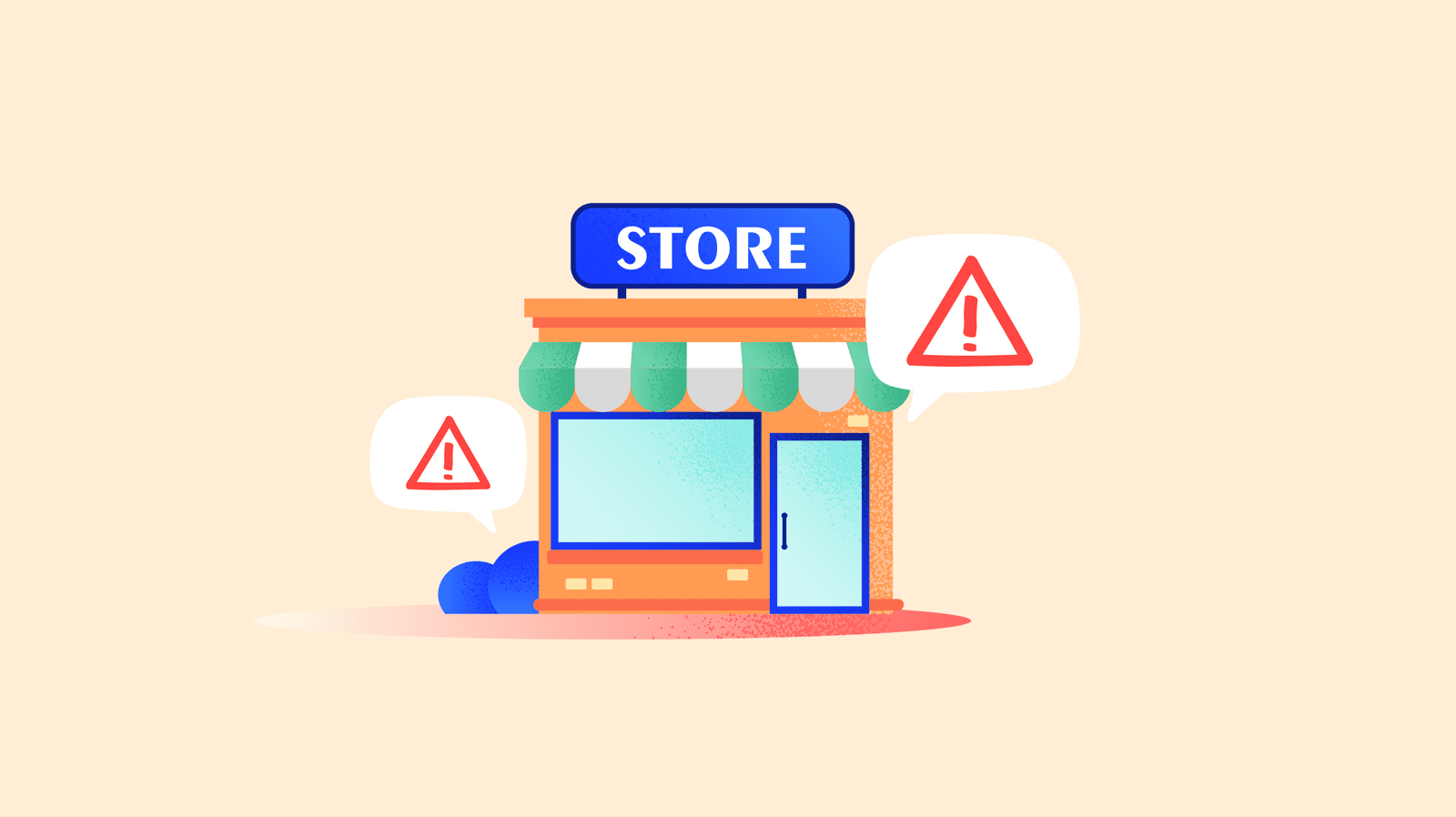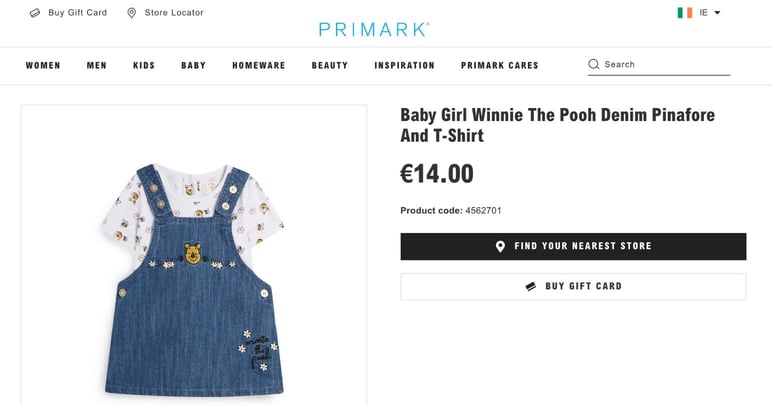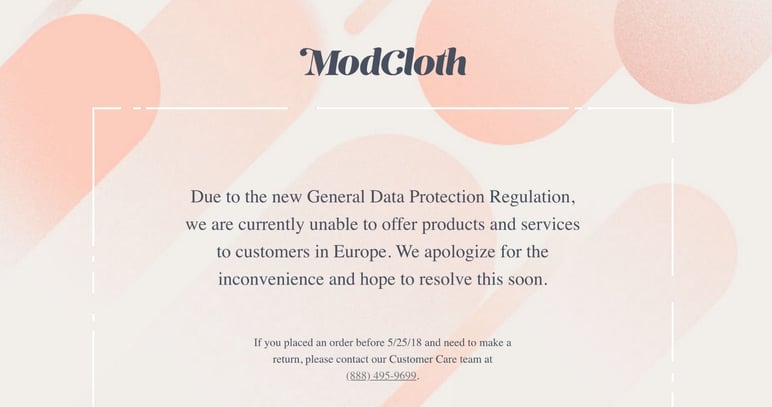
Last April, headlines were ablaze with the news of Primark’s finances going up in flames: the huge low-cost fashion chain went from a monthly sales figure of 750 million euros to zero.
The reason for this as indicated by the media was the closing down of company stores in Europe and the United States beginning on March 22, 2020 due to COVID-19.
The real cause, however, was the lack of an ecommerce model at Primark (known as Penneys in Ireland), which had always prided itself on the exclusivity it could offer customers by selling through physical stores.
Perhaps Primark —along with other brands reluctant to join the digital marketplace, such as Lefties, Bonobos, and ModCloth— was raking in enough revenue not to have to worry about creating an online store.
But the global lockdown has revealed that digital channels are more than just a marketing alternative. They represent the most in-demand outlet for doing business and, sometimes, the only one accessible to consumers.
The financial effects of the coronavirus crisis in the offline sphere
In general, sales volumes have decreased in all sectors with the exception of those supplying basic and critical products. But some brands and retail chains have been able to maintain their growth thanks to sustainable online models that they developed over a long period of time.
Walmart, Target, Macy’s, Best Buy, and Williams Sonoma are examples of U.S. stores that have not been as affected by the crisis. Their solid online business structure and experience in handling shipments from various logistics centers ensures that they can continue to meet home delivery demand.
A number of large chains and small businesses alike have so far not been concerned with developing their digital presence or are relying on business strategies that make delivering to customers’ doors impossible. Without an online store, they are turning to the sale of gift cards to be spent at a later date as the only way of making money while the crisis persists.

The most affected offline businesses without a digital presence
Stores that sell discounted or “off-price” inventory
Department stores dedicated to selling surplus or heavily discounted inventory items have still not yet developed digital channels. In the United States, this situation has affected chains such as Marshalls, TJ Maxx, Home Goods, and Ross Stores.
Low-cost supermarkets
Some major food chains did not have a strong digital model in place to handle the rise in demand and home deliveries with the same preparedness as their competitors. This was the case with Aldi, which does not have an online store. Although supermarkets remain open during special hours, they still lose out on many customers who are only interested in home delivery.
→ Related: The radical transformation of food manufacturers and retailers

Euro/Dollar stores
Chain stores offering super cheap overstock products are also vulnerable in an exclusively digital environment. Among their reasons for not having developed ecommerce models is that shipping costs do not offset the low price of goods, which means they cannot offer free shipping without breaking the bank.
Independent retailers
Small neighborhood stores would seem like the last businesses to jump on the online bandwagon. Yet surprisingly, many of them have opted to open up an online store to expand their sales nationwide, especially now that social media can easily promote any brand.
Although they tend to have small teams and are unable to handle a sudden rush of orders, online sales are enough to keep a small business running smoothly for as long as physical shops remain closed.
This speaks to the need for retailers to have sufficient support in terms of accessing digital resources and flexible software, such as a PIM (Product Information Manager), which can be adapted for any size catalog.
The impact on manufacturers and retailers of not having a digital model
Accumulation of stock
Primark reported to have over 324 million euros’ worth of in-stock merchandise. On the upside, clothes and accessories are non-perishable materials and will not spoil while the company waits for lockdown measures to be eased. Nonetheless, it all represents stagnant inventory that is not providing a return on investment.
Businesses dedicated to the manufacture or sale of perishable products would face a much more catastrophic situation, which is why the digital model is advancing very rapidly in the food, cosmetics, and pharmacy sectors.

Resources stagnation
Dead stock inventory serves no practical use. Nor do the resources dedicated to maintaining it despite the fact that these cannot be scrapped without undermining the entire structure of the company itself.
Without software devoted to managing inventory, catalogs, and customer support, offline businesses will remain on standby until further notice, unable to provide updates or implement product launch schedules, even at a slower pace or through alternative sales channels.
→ You may also be interested: Good practices for businesses in times of crisis
In the past several weeks, many companies and organizations have been seen to refer negatively to employees as simply a “resource.” Primark had to furlough 68,000 employees who suddenly became redundant for the company. Yet this temporary economic shutdown not only affects sales assistants—it also bears implications for any employee who cannot continue to work if their company lacks alternative sales channels.
Having a digital presence involves investing in more resources as well as making sure not to lose them in the event that physical stores are closed. The aim is for brands and manufacturers to be able to sustain their activity, keep meeting the supply needs of their commercial network, and maintain their public presence.
→ Check these out: Tips for offloading tied-up inventory goods
Brand disappearance
Perhaps no one will forget that Primark still exists after the COVID-19 crisis is over — after all, many fans are waiting for the reopening of its stores. But both this brand and many others without a digital presence will lose many loyal customers and temporary sales at the cost of potentially disappearing from the marketplace.
Consumers are increasingly doing more online research before deciding on a product. However famous a company may be, there are so many competitors on the Internet that it’s easy for a shopper to find satisfaction in something new, reducing or even abandoning his or her loyalty to what was once a go-to brand.
→ Enhance your business: How to identify your online buyer persona
Conclusion
Many businesses that depend on physical stores along with those sectors that have done little to promote digital channels —such as those selling furniture, construction materials, and food products— are being affected by the closure of their shopping establishments.
Consumers are directing their attention more and more to the Internet, and the increased use of websites, online marketplaces, and mobile apps is not a symptom of the current crisis, but rather a new trend that has been growing year by year and will continue to solidify in the future.
Developing a digital presence is a lifeline for any brand right now as well as in a post-coronavirus landscape. It will allow manufacturers to maintain communication with their commercial network and enable retailers to continue meeting buyer demand.
So why not start by organizing your catalog so you can digitize and connect it to any sales channel with the help of a free 30-day trial of the Sales Layer PIM. Quality content as well as an engaging and comfortable shopping experience are the keys to making sure your business rises above the doldrums of the offline economy.






.png?width=520&name=Blog%20Partner%20(1).png)




